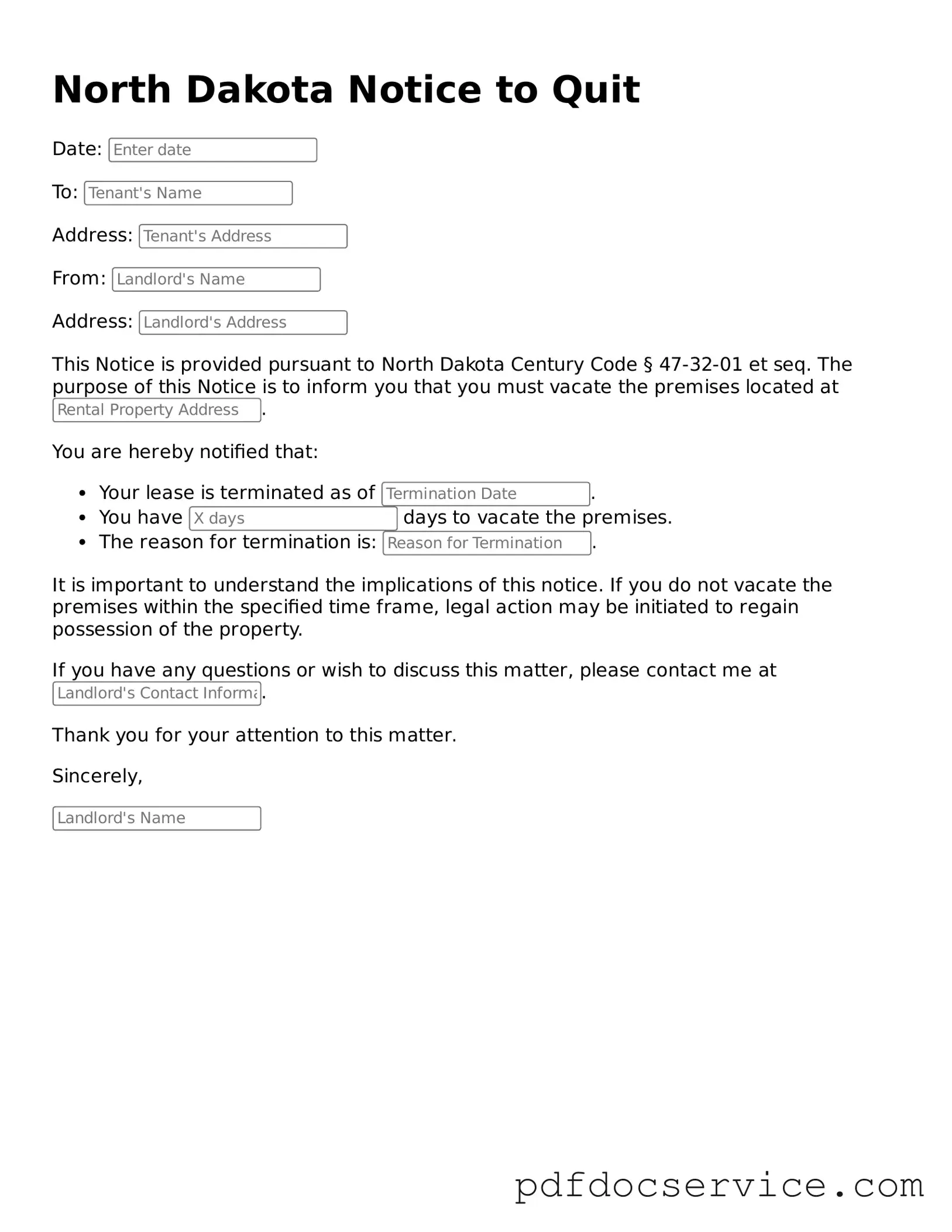What is a Notice to Quit in North Dakota?
A Notice to Quit is a formal document used by landlords in North Dakota to inform tenants that they must vacate the rental property. This notice is typically issued when a tenant has violated the terms of the lease agreement or has failed to pay rent. It serves as a preliminary step before legal eviction proceedings can begin.
When should a landlord use a Notice to Quit?
A landlord may issue a Notice to Quit in several situations, including:
-
Failure to pay rent on time.
-
Violation of lease terms, such as unauthorized pets or excessive noise.
-
Engaging in illegal activities on the premises.
Each situation may require a different notice period, so it’s important to understand the specific circumstances surrounding the tenancy.
The Notice to Quit should include the following information:
-
The date of the notice.
-
The tenant's name and address.
-
The specific reason for the notice.
-
The date by which the tenant must vacate the property.
-
The landlord's name and contact information.
Providing clear and detailed information helps avoid confusion and potential disputes.
How much notice is required before a tenant must vacate?
The notice period depends on the reason for the eviction:
-
For non-payment of rent, a 5-day notice is typically required.
-
For lease violations, a 30-day notice is standard.
It’s crucial for landlords to adhere to these timelines to ensure compliance with North Dakota law.
Can a tenant contest a Notice to Quit?
Yes, a tenant can contest a Notice to Quit. If a tenant believes the notice is unjust or that they have rectified the issue (such as paying overdue rent), they can communicate with the landlord. If the matter escalates, the tenant may seek legal advice or representation to address the situation in court.
What happens if a tenant does not vacate by the deadline?
If a tenant fails to vacate the property by the specified deadline, the landlord can initiate formal eviction proceedings. This typically involves filing an eviction lawsuit in the local court. The court will then schedule a hearing where both parties can present their cases.
Is a Notice to Quit the same as an eviction notice?
No, a Notice to Quit is not the same as an eviction notice. The Notice to Quit is a preliminary step that informs the tenant of the need to vacate. If the tenant does not comply, the landlord can then proceed with filing for eviction, which is a legal process handled by the court.
While North Dakota does not have a state-mandated form for a Notice to Quit, it is advisable to use a written format that includes all necessary information. Many landlords choose to create their own form or use templates available online to ensure they meet legal requirements.
Can a tenant request more time to move out?
A tenant may request additional time to vacate the property. This request should be made directly to the landlord, who may choose to grant an extension based on the circumstances. However, the landlord is not legally obligated to agree to the request.
What should a landlord do after issuing a Notice to Quit?
After issuing a Notice to Quit, the landlord should keep a copy for their records and monitor the situation. If the tenant vacates by the deadline, the landlord can prepare for the next steps in finding a new tenant. If the tenant remains, the landlord may need to pursue eviction through the court system.
